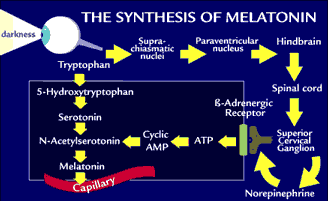
ABSTRACT: BACKGROUND: Thoracotomy is associated with severe pain that may persist for years. Acupuncture is a complementary therapy with a proven role in pain control. A randomized trial showed that acupuncture was effective in controlling pain after abdominal surgery
(see analysis of this study), but the efficacy of this technique for the treatment of thoracotomy pain has not been established. We developed a novel technique for convenient application of acupuncture to patients undergoing thoracotomy, and in a pilot evaluated the safety of this intervention and the feasibility of doing a randomized trial. METHOD: Adult patients scheduled for unilateral thoracotomy with preoperative epidural catheter placement received acupuncture immediately prior to surgery. Eighteen semi-permanent intradermal needles were inserted on either side of the spine, and four were inserted in the legs and auricles. Needles were removed after four weeks. Using a numerical rating scale, pain was measured on the first five postoperative days. After discharge, pain was assessed using the Brief Pain Inventory at 7, 30, 60 and 90 days. RESULTS: Thirty-six patients were treated with acupuncture. Of these, 25, 23, and 22 patients provided data at 30, 60, and 90 days, respectively. The intervention was well tolerated by patients with only one minor and transient adverse event of skin ulceration. CONCLUSIONS: The rate of data completion met our predefined criterion for determining a randomized trial to be feasible (at least 75% of patients tolerated the intervention and provided evaluable data). This novel intervention is acceptable to patients undergoing thoracotomy and does not interfere with standard preoperative care. There was no evidence of important adverse events. We are now testing the hypothesis that acupuncture significantly adds to standard perioperative pain management in a randomized trial.
Read the Full study here
Alex's comment: Even though this study is about a particularly dramatic surgery, I can tell you from my experience press tacs are very good for many types of pain. The use of intradermal needles - very small 1 1mm needles on a sticky backing - is a great way to use acupuncture to extend a regular acupuncture treatment or to use in place of a regular treatment. The advantage of is that they can be safely kept in place for days, thus extending the treatment over a longer period.
My patients report this is effective and pain free. I will often use intradermal needles or ear press tacs. Ear press tacs are the same concept as an intradermal needle but instead of a needle they have a small metal ball on a sticky backing that are pressed on the microsystem points of the outer ear. This too is effective.
 ABSTRACT: BACKGROUND: Thoracotomy is associated with severe pain that may persist for years. Acupuncture is a complementary therapy with a proven role in pain control. A randomized trial showed that acupuncture was effective in controlling pain after abdominal surgery (see analysis of this study), but the efficacy of this technique for the treatment of thoracotomy pain has not been established. We developed a novel technique for convenient application of acupuncture to patients undergoing thoracotomy, and in a pilot evaluated the safety of this intervention and the feasibility of doing a randomized trial. METHOD: Adult patients scheduled for unilateral thoracotomy with preoperative epidural catheter placement received acupuncture immediately prior to surgery. Eighteen semi-permanent intradermal needles were inserted on either side of the spine, and four were inserted in the legs and auricles. Needles were removed after four weeks. Using a numerical rating scale, pain was measured on the first five postoperative days. After discharge, pain was assessed using the Brief Pain Inventory at 7, 30, 60 and 90 days. RESULTS: Thirty-six patients were treated with acupuncture. Of these, 25, 23, and 22 patients provided data at 30, 60, and 90 days, respectively. The intervention was well tolerated by patients with only one minor and transient adverse event of skin ulceration. CONCLUSIONS: The rate of data completion met our predefined criterion for determining a randomized trial to be feasible (at least 75% of patients tolerated the intervention and provided evaluable data). This novel intervention is acceptable to patients undergoing thoracotomy and does not interfere with standard preoperative care. There was no evidence of important adverse events. We are now testing the hypothesis that acupuncture significantly adds to standard perioperative pain management in a randomized trial. Read the Full study here
ABSTRACT: BACKGROUND: Thoracotomy is associated with severe pain that may persist for years. Acupuncture is a complementary therapy with a proven role in pain control. A randomized trial showed that acupuncture was effective in controlling pain after abdominal surgery (see analysis of this study), but the efficacy of this technique for the treatment of thoracotomy pain has not been established. We developed a novel technique for convenient application of acupuncture to patients undergoing thoracotomy, and in a pilot evaluated the safety of this intervention and the feasibility of doing a randomized trial. METHOD: Adult patients scheduled for unilateral thoracotomy with preoperative epidural catheter placement received acupuncture immediately prior to surgery. Eighteen semi-permanent intradermal needles were inserted on either side of the spine, and four were inserted in the legs and auricles. Needles were removed after four weeks. Using a numerical rating scale, pain was measured on the first five postoperative days. After discharge, pain was assessed using the Brief Pain Inventory at 7, 30, 60 and 90 days. RESULTS: Thirty-six patients were treated with acupuncture. Of these, 25, 23, and 22 patients provided data at 30, 60, and 90 days, respectively. The intervention was well tolerated by patients with only one minor and transient adverse event of skin ulceration. CONCLUSIONS: The rate of data completion met our predefined criterion for determining a randomized trial to be feasible (at least 75% of patients tolerated the intervention and provided evaluable data). This novel intervention is acceptable to patients undergoing thoracotomy and does not interfere with standard preoperative care. There was no evidence of important adverse events. We are now testing the hypothesis that acupuncture significantly adds to standard perioperative pain management in a randomized trial. Read the Full study here



